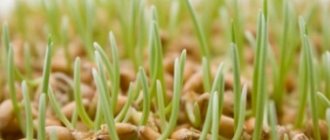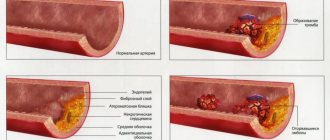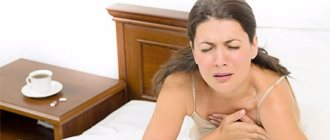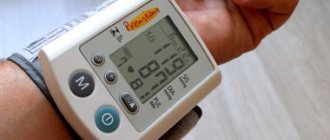The most dangerous manifestation of arrhythmia is tachycardia, a disease of modern people. In most cases, the disease is due to the fact that the current generation lives at a crazy pace. People do not have enough time to cope with their workloads at home and at work. They are constantly accompanied by emotional stress. The stress hormone is released. Distant ancestors also had it, but for them it arose during an attack by an animal or another tribe. The person responded with some action, and the tension was released naturally. Unlike modern times, when the release of the hormone is not discharged, it attacks the heart first.
Arrhythmia gradually develops. Isolated cases of increased heart rate are a reaction to fatigue, lack of sleep, etc. When the symptoms become permanent, then the help of a doctor is needed. For any arrhythmias, thyroid function is checked. Sometimes a pulse disturbance begins against the background of a pulse failure. An unstable rhythm is often a companion to diabetes.
Classification of tachycardia
There are several different classifications of the disease. Due to their occurrence, the following types of tachycardia are distinguished:
- physiological;
- pathological
According to the duration of clinical manifestations:
- acute tachycardia - occurs rarely, in the form of palpitations that pass after a while;
- chronic tachycardia - increased heartbeat is constantly observed in the patient.
Based on localization, the following types of tachycardia are distinguished:
- Sinus . An increase in heart rate occurs as a result of a change in the frequency and strength of the electrical impulse created by the nerve fibers of the sinus node.
- Paroxysmal. It usually develops against the background of some disease and occurs rapidly, in the form of an attack. The following forms of paroxysmal tachycardia are distinguished:
- supraventricular – localized above the ventricles of the heart muscle;
- ventricular - rhythm failure occurs as a result of impaired contraction of the ventricles.
- Atrial fibrillation . The overall heart rate goes astray.
- Ventricular fibrillation . This is a chaotic, rapid contraction of the ventricles of the heart. Fibrillation is an extremely dangerous condition of the body and requires immediate medical intervention. Otherwise, a number of severe complications and even the death of the patient may develop.
First aid for high heart rate
Increased tachycardia can become a serious cause of critical condition of the body. To relieve symptoms, it is recommended to do the following:
- wash your face with cold water;
- drink a glass of water;
- ventilate the room;
- unfasten buttons, loosen ties, belts;
- remove outer clothing;
- lie on your side if you feel dizzy or weak;
- massage the eyeballs with gentle movements;
- wait for the ambulance.
It is not recommended to take the signs of tachycardia lightly. Over time, an occasional illness can turn into a chronic form, which can lead to serious consequences.
Causes of tachycardia
The main reasons for the development of tachycardia are:
- increased body temperature;
- thyroid diseases;
- atherosclerosis;
- anemia;
- high blood pressure;
- respiratory failure;
- congenital diseases of the conduction system;
- cardiovascular diseases (ischemia, infarction, myocardial disease, angina pectoris, cardiosclerosis, myocarditis, heart failure, myocardial dystrophy and a number of others);
- neuroses;
- VSD;
- acute pain (for example, with renal colic);
- vascular insufficiency;
- poisoning of the body;
- infections and any inflammatory diseases of the body (pneumonia, tonsillitis, sepsis, tuberculosis, and so on);
- uncontrolled use of certain medications (diuretics, hormones, aminophylline, atropine, adrenaline and a number of others).
Relationship and reasons for development
Many patients accidentally discover an increased heart rate when measuring their blood pressure. Pathological processes do not have an organic connection, but one of them often provokes the development of the other. In the case of arterial hypertension, the signal is sent from the vasomotor center, and tachycardia occurs when the reflexogenic zone is damaged. There is no direct relationship between the regulators, but a rapid heart rate appears due to increased pressure due to vasoconstriction. Additional stress is placed on the heart muscle, causing it to contract more than usual.
Tachycardia with high blood pressure gradually causes cardiac hypertrophy. The following factors may be the underlying causes of the development of the disease:
- Exposure to stressful situations promotes the production of adrenaline and its release into the blood. It constricts blood vessels and makes the heart beat faster than normal.
- Excessive physical activity leads to increased heart rate due to increased stress on the heart muscle. Gradually, high blood pressure begins to accompany the process.
- With hypertension, a person experiences increased blood pressure, which causes other problems to develop (vascular spasms, ischemia, atherosclerosis, and others). Tachycardia manifests itself as a compensatory mechanism. Its essence is to improve tissue nutrition by increasing the intensity of heart contractions.
- Diseases of the heart, blood vessels and endocrine system can increase blood pressure. Rapid heartbeat in this case is a secondary manifestation against the background of the development of underlying pathological processes.
Increased heart rate with arterial hypotension (low blood pressure) is extremely rare. The patient is recommended to undergo a comprehensive examination to find the cause of the strange deviation. In most people, a similar combination of pathological processes occurs due to blood loss, injury and a malfunction in the autonomic nervous system. Treatment of tachycardia with low pressure consists of eliminating the underlying cause and stabilizing the heart rhythm. If you compare treatment regimens, they are similar, but the selection of medications should be entrusted to a doctor to avoid complications.
Symptoms of tachycardia
The main clinical signs of the disease are:
- strong heartbeat;
- pulsation of the neck veins;
- pain, heaviness in the heart area;
- dyspnea;
- feeling of lack of air;
- dizziness, loss of consciousness;
- decrease in pressure.
Additional symptoms that may occur with tachycardia are:
- sudden change of mood;
- increased fatigue, general weakness;
- sleep disorders;
- decreased appetite;
- decreased diuresis;
- increased irritability.
Diagnosis of tachycardia
The main methods for diagnosing the disease are:
- collecting anamnesis, interviewing and examining the patient;
- electrophysiological study - carried out to determine the localization of foci of tachycardia, identifying the mechanism of their action;
- ECG – using this technique, the electrical impulses of the myocardium are recorded, the rhythm and frequency of heart contractions are determined, and ventricular and sinus tachycardia are differentiated;
- bicycle ergometry is a research method that tests how the heart works during physical activity;
- MRI – detects foci of fatty and fibrous tissue in the myocardium;
- X-ray of the heart using a contrast agent;
- blood test (general, biochemical, sugar, cholesterol).
Recipes for low blood pressure
In some cases, low blood pressure is considered normal, provided that the person does not suffer from dizziness or loss of strength.
Heart disease or dehydration may also be causes. With low blood pressure and rapid heartbeat, it is necessary to treat with completely different drugs. Folk remedies should also be aimed at normalizing blood pressure and heart rate.
- Dried licorice root and string leaves are placed in a saucepan in equal proportions. Fill the plants with cold water and place on low heat. The broth should boil for 20 minutes, then cover the pan with a lid and let the broth brew for two hours. It is recommended to drink half a glass after the last meal, preferably before bed.
- Tachycardia at very low blood pressure can be treated with cinnamon. Dissolve half a dessert spoon of ground powder in a glass of warm water. Take in the morning and evening after meals.
- You can normalize your pulse and blood pressure with the help of an effective remedy - ginger. You need to purchase fresh root. We peel the skin with a knife, then chop it finely and pour boiling water over it. As soon as the drink reaches room temperature, the medicine is ready. Drink half a glass of ginger tincture in the morning after breakfast and in the evening after the last dinner.
- Mix a small handful of ground coffee with liquid honey and lemon juice. The end result should be the consistency of sour cream. Take one teaspoon, 30 minutes after eating.
- Try to start your morning with a tonic drink, for example, you can drink a cup of coffee made from green beans. Before using it, be sure to have a hearty breakfast. Do some exercise, ventilate the room and take a contrast shower.
Treatment of tachycardia (classical medicine)
Before starting treatment, the doctor must determine what causes the development of the disease and identify the type of tachycardia. In some cases, no treatment is required. To normalize your heart rate, it is enough to simply normalize your work and rest schedule and avoid stress.
However, in most cases, pathological tachycardia requires drug therapy. The attending physician should prescribe medications, determine the duration of the course of treatment and the frequency of doses, taking into account the form of the disease, the presence of concomitant pathologies, as well as the individual characteristics of the patient’s body. Self-medication is unacceptable and can lead to the development of a number of serious complications.
Therapy for tachycardia is usually etiotropic, that is, aimed at the cause of increased heartbeat. Most often, the cause of the disease is pathologies of the cardiovascular system, autonomic nervous system, and endocrine system.
To prevent attacks of tachycardia, antiarrhythmic drugs are indicated. If the patient has an attack, you should immediately stop any physical activity and take medications prescribed by your doctor.
Age-related heart rate norms
In adults, a normal rhythm is considered to be about 60-70 beats per minute. Below or above these limits is a warning about abnormalities in the body. Doctors consider a slow heartbeat - bradycardia - to be a more dangerous phenomenon. Rapid pulse - tachycardia, when the brain experiences a lack of oxygen. It compensates for the deficiency in two ways: by increasing blood pressure or increasing heart rate. Their frequency depends not only on external factors and chronic diseases, but also on a person’s hereditary predispositions.
| Age (years) | Average value (beats per minute) |
| Up to 1 year | 140 |
| 1‒2 | 124 |
| 4‒6 | 106 |
| 6‒8 | 98 |
| 8‒10 | 88 |
| 10‒12 | 80 |
| 12‒15 | 75 |
| 15‒50 | 70 |
| 50‒60 | 74 |
| 60‒80 | 79 |
Standard boundaries depend on a person’s age, but we must not forget about individual characteristics. Anything higher is an increased heart rate. An adult is diagnosed with tachycardia when his pulse exceeds 90 beats.
Traditional medicine for tachycardia
Folk remedies for tachycardia are infusions, decoctions, and teas made from medicinal herbs. Most often, plants are used that soothe and regulate the functioning of the heart muscle.
Medicinal herbs for the treatment of tachycardia
To achieve a lasting effect, it is worth taking folk remedies for a long time, at least 3 months. During this time, the attacks should pass, and the activity of the heart muscle returns to normal.
Herbal teas
Soothing teas have a good therapeutic effect for tachycardia. It is recommended to replace regular tea with the following herbs:
- valerian;
- linden (flowers);
- spiraea;
- hawthorn (fruit);
- motherwort;
- mountain arnica, etc.
Dried plants are brewed as tea or used as additives to regular tea. The dosage is 1 tsp. herbs per 200 ml of boiling water. Drink in three doses throughout the day.
For tachycardia, it is recommended to regularly take tricolor violet tea. To do this, the flowers are brewed like regular tea and taken for a long time. Over time, the attacks should decrease.
Decoctions, herbal infusions
To treat tachycardia, infusions of various herbs are used:
- Adonis (adonis) . For infusion you will need 1 tsp. plants and 1 tbsp. boiling water Pour in and leave for half an hour. Take in 3 doses of 15 ml. The medicine strengthens the heart and regulates its functioning. It is very important to strictly follow the instructions for taking it, being careful not to overdose.
- Hawthorn (flowers) . An infusion from this plant restores heart rhythm. 1 tbsp. l. The flowers are steamed in 300 ml of boiling water and left for half an hour. Drink 100 ml in three doses half an hour before meals. Duration of use - until recovery. You can also drink a tincture of the plant’s fruits – 10 drops. in three doses before meals.
- Horsetail infusion . 1 tbsp. l. Steam the plants with 200-250 ml of boiling water and leave for 3 hours. Take 15 ml up to 6 times a day. The infusion helps greatly in the initial stages of the development of the disease. In difficult cases, the remedy has a weak effect. The plant also has a healing, rejuvenating effect, saturating the body with important elements and minerals, so it is used to treat many pathologies.
- Gray jaundice . For infusion you will need 1 tsp. dry mixture. Pour boiling water over everything and let stand for 2 hours. In the first week, take 2 tsp. in 3-5 doses, regardless of food. Then you should reduce the dosage to 1 tsp. in 3 doses. Duration of treatment – 1 month. You should not take more, as this is a poisonous plant.
- Dill seeds . An excellent remedy for the treatment of tachycardia, as well as atherosclerosis of the vessels of the head. 1 tbsp. l. pour 200-250 mg of boiling water and let stand. Drink during the day for a month. Then take a break and repeat the treatment. And so on until the symptoms disappear.
Valerian infusion in cold water
To prepare the infusion, 3 tsp. The crushed roots of the plant are poured into the teapot. Add 200 ml of chilled boiled water, cover and leave overnight. In the morning, filter and consume 15 ml in 3-4 doses.
Unlike other options for preparing an infusion, the plant is kept in cold water, which allows the essential oils to be preserved, enhancing the beneficial effect.
Herbal infusions
To treat pathology, you can use infusions of various herbs.
Recipe No. 1
Required:
- swamp grass;
- dill (seeds);
- parsley (seeds).
Take 1 tbsp. l. dried plants, steam in 200-250 ml of boiling water, leave for an hour, squeeze. Finely chopped onion (1 head) and garlic (5 cloves), mashed fresh rowan berries (1 tbsp.) are poured with the prepared infusion. Instead of fresh fruits, you can take frozen or dry berries. Leave the resulting mixture for 12 hours, drink 2 tbsp in 4-5 doses. l. before meals. The duration of treatment is a month. Then they take a break and repeat the treatment.
Recipe No. 2
The drug is used for tachycardia and to reduce blood pressure in hypertension.
Required:
- valerian (roots) – 2 parts;
- motherwort (grass) – 2 parts;
- anise (fruit) – 1 part;
- yarrow (herb) – 1 part.
Mix the ingredients, separate 1 tbsp. l. mixture and pour 1 tbsp. boiling water, stand for half an hour. Take a third of a glass in 3 doses. Course - 2 months.
Recipe No. 3
Required:
- swamp grass;
- mint;
- horsetail;
- periwinkle.
Mix the ingredients in equal quantities, separate 1.5 tbsp. l. mixture, pour in 300 ml of boiling water, boil, remove from heat, let stand for 1 hour, strain.
Drink 0.5 cups in 3 divided doses before meals. Duration of treatment – 2 months. To enhance the effect, it is recommended to add 1 tsp. motherwort juice per serving of infusion.
Lemon, honey, apricot kernels
You will need 0.5 kg of lemons, honey and 20 apricot kernels. Cut the lemons, chop the kernels, mix everything and take 15 ml in two doses.
Garlic, lemon
Required:
- garlic – 10 medium heads;
- honey – 1 l.;
- lemons – 10 pcs.
Grind the garlic, squeeze out the lemon juice, add honey and mix well. Infuse in a glass container for a week, while covering the jar with polyethylene. Take 4 tsp. in 1 dose per day.
For any heart pathologies, it is useful to eat homemade yogurt.
Drug therapy
Medicines for tachycardia with high blood pressure are selected depending on the factors that influenced the development of pathological abnormalities. The treatment regimen mainly consists of the following groups of medications:
- Sedatives (Persen, Negrustin, Bromenval) are designed to reduce nervous tension. After their use, the heart rate slows down and the pressure gradually decreases.
- Beta-blockers (Bisoprolol, Nebilet, Atenolol) prevent the adrenaline produced by the body from affecting the heart muscle. The effect allows you to dilate blood vessels and reduce the intensity of contractions.
- Sodium channel blockers (Quinidine, Lidocaine, Ethmozin) are intended to restore the usual heart rhythm. They block the flow of sodium into cardiomyocytes (heart cells), which stops the circulation of the pathological signal and slows down the wave of excitation.
- Thyrostatic drugs for tachycardia (Tirazol, Microiod, Propicil) are used as a means of suppressing excessive activity of the thyroid gland. Its hormones in high concentrations have a negative effect on the cardiovascular system.
- Cardiac glycosides (Korglikon, Strophanthin, Celanid) help normalize the force of heart contraction and equalize its rhythm.
- Potassium channel blockers (Amiadarone, Nibentan, Sotalex) slow down electrical activity in the heart, stabilizing its rhythm.
- Calcium channel blockers (Verapamil, Anipamil, Diltiazem) prevent calcium from entering the heart and blood vessels. After their use, the blood vessels dilate, the heart rate slows down and the pressure drops.
The attending physician should prescribe the tablets after examination. Taking them on your own is dangerous for your health, as there is a risk of worsening arrhythmia and developing cardiovascular pathologies.
Prevention of tachycardia
The main measures to prevent the disease are:
- giving up bad habits (alcohol abuse, smoking);
- avoidance of caffeinated drinks;
- weight control, preventing the development of obesity;
- proper nutrition - you should avoid fatty, spicy, fried, sweet, smoked, pickled foods; you should introduce fresh fruits and vegetables into your diet, which contain heart-healthy vitamins and minerals;
- normalization of work and rest regimes;
- physical activity - walking, physical education;
- hardening the body, strengthening the immune system;
- avoiding stress;
- treatment of cardiovascular diseases and concomitant somatic pathologies that affect heart rate;
- regular sanitation of foci of chronic infection in the body;
- undergoing a preventive examination of the body (at least once a year) - this will help to identify tachycardia and determine the causes of its occurrence at an early stage, which will significantly facilitate treatment and improve the prognosis.
Herbal infused kombucha
Mix 40 grams of motherwort, heather, foxglove, foxglove, and black cohosh and pour 3 liters of boiling water. Let it brew overnight and strain well. Then pour in the kombucha and add honey. The drink will be ready in 8 days. Drain 1.5 liters and store in the refrigerator. Top up the mushroom with only the prepared herbal infusion (take 20 grams of herbs). You need to take the drink three times a day before meals, 100 ml. This folk remedy helps if tachycardia is caused by heart disease (myocarditis, cardiosclerosis, rheumatic carditis).










